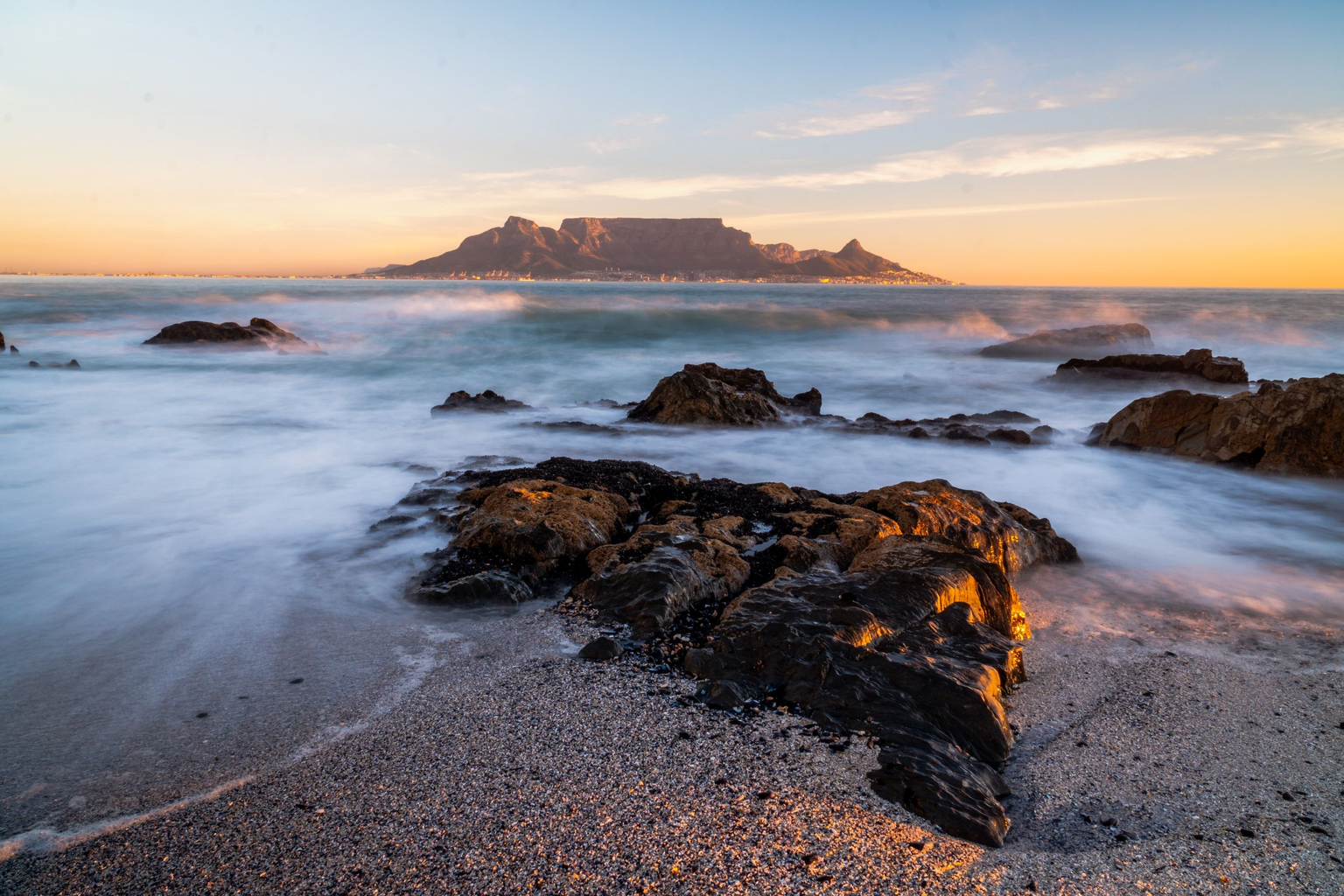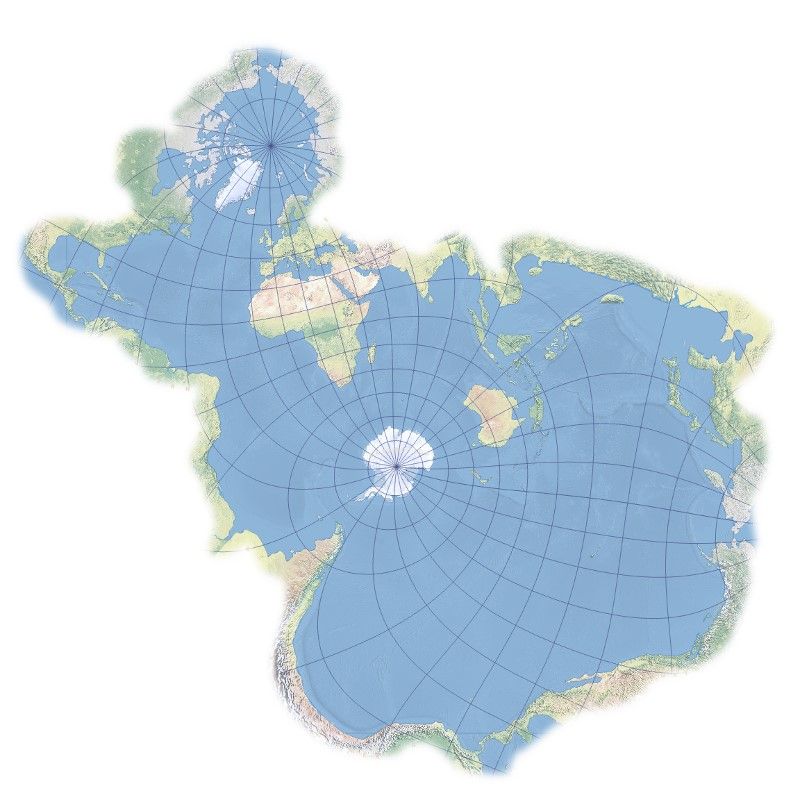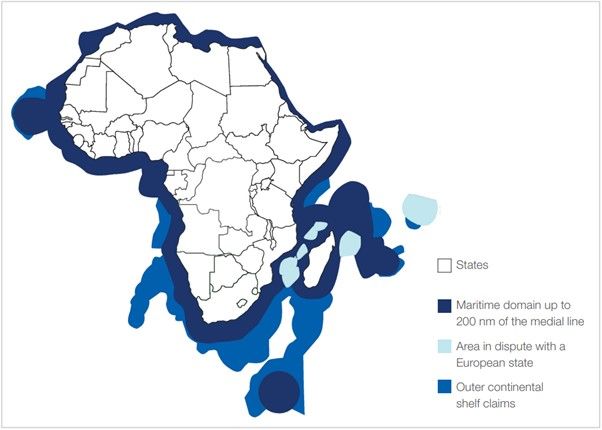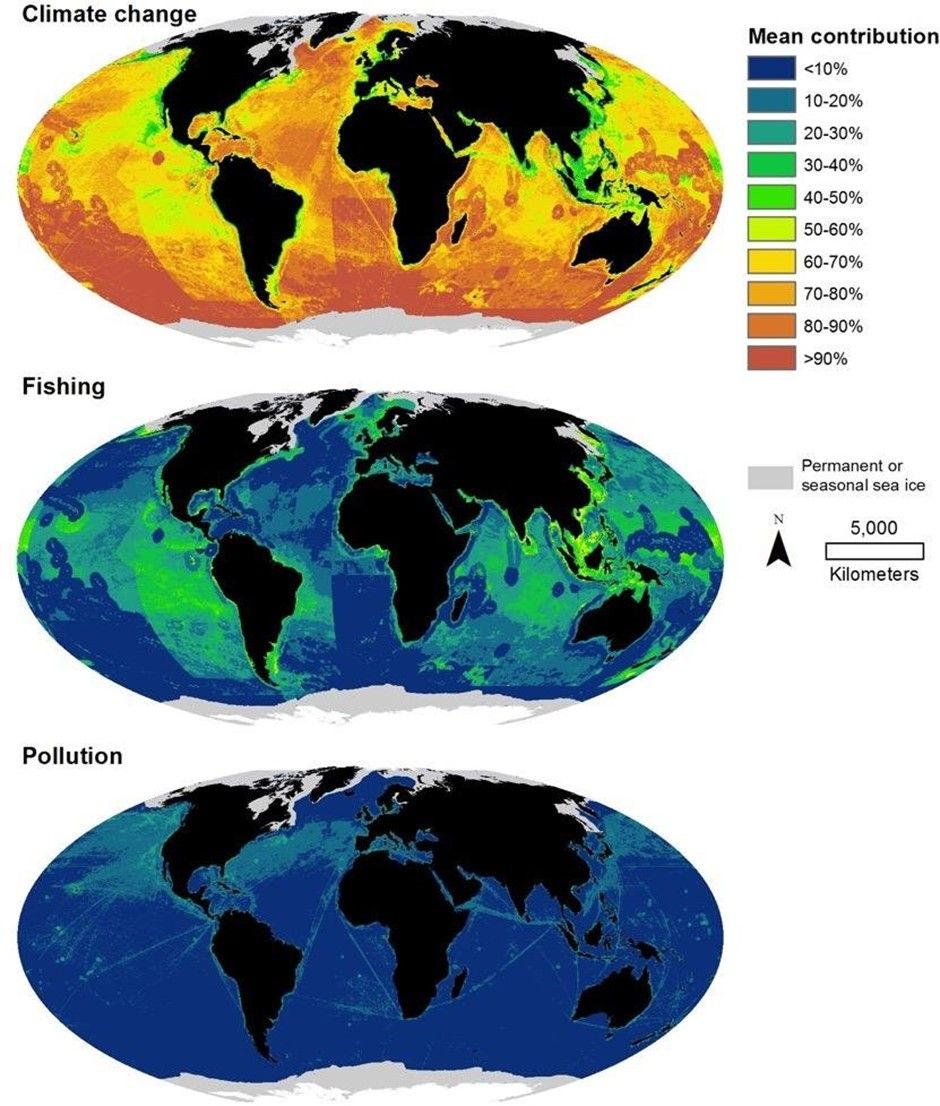- Ocean Governance & Blue Economy
Ocean governance in Africa and Europe – an introduction
- Nicolas Gate

Worldwide, the ocean is in its worst condition to date. As the blue economy is expected to boom, now is the time to tie its development to sustainable governance and biodiversity restoration.
Covering about 70% of the Earth’s surface, the ocean is the mainstay of its health and balance. The ocean constitute the planet’s largest biosphere, hosting 80% of all of life, but also generating about half of the oxygen, absorbing around a quarter of carbon dioxide emissions, and capturing most of the extra heat.
Human activity is already over-reliant on the ocean’s ability to buffer against the impacts of climate change. Coincidently, blue acceleration and the prospects of the blue economy are opening wide horizons – so much so that the African Union talks of a ‘new frontier of African renaissance’. Given the outsize political nature of the ocean ecosystem, only a new paradigm of international cooperation can assure its preservation and fair and sustainable use. The following figures illustrate how Africa and Europe are confronted by this joint responsibility.
OCEAN GOVERNANCE
60% of the ocean lies beyond the borders of national jurisdiction. Hence, efficient ecological policy-making hinges on international consensus.
Although the African continent is almost three times as large as Europe, its coastline stretches over 30 500 km, which is well below the European Union (EU)’s 68 000 km. This is called the ‘coastline paradox’. The two continents are indirectly bordering one another through roughly 20 000 km of coastline.
39 of the African Union’s 55 member states have access to the sea. 22 of the 27 EU members are coastal states.
The dimensions of the exclusive economic zones are a subject of dispute and negotiation. African countries have an exclusive economic zone of 13 million square kilometres. The EU claims an exclusive economic zone of 25 million square kilometres, the largest in the world. Regardless, ecological policy-making requires an understanding of the ocean as a single and fluid metasystem, given how adverse impacts cascade across maritime borders.
The ‘Spilhaus projection’ of the earth (developed by South-African oceanographer Athelstan Spilhaus) highlights the promiscuity of Africa and Europe within the single, uninterrupted expanse of the ocean.

Source: Burrows, D. and Šavrič, B. (2020). The Spilhaus World Ocean map in a square. ArcGIS StoryMaps. https://storymaps.arcgis.com/stories/756bcae18d304a1eac140f19f4d5cb3d
At the 2022 COP of the Convention on Biological Diversity, African and European countries committed themselves to the “effective conservation and management of at least 30% of the world’s lands, inland waters, coastal areas and oceans, with emphasis on areas of particular importance for biodiversity and ecosystem functioning and services.” This target is building upon a 2010 commitment to conserve 10 % of coastal and marine areas by 2020.
In 2023, according to the UNEP-WCMC, only 8.97% of European seas and coast are designated as Marine Protected Areas (MPAs) and less than 1% are strictly protected. Africa’s MPAs make up for 16.67% of the continent’s total marine and coastal area.
Yet, Africa and Europe are in the vicinity of more than a quarter of the world’s Large Marine Ecosystems (LMEs).
The coral reef of East Africa alone, extending from the coasts of Kenya to northern Mozambique, make up as much as 5% of the planet’s total coral reef area. Coral reefs are fragile and endangered ecosystems, hosting more than 25% of all marine life, supporting the livelihoods of more than 500 million people and providing 10% of all fish caught worldwide, despite occupying less than 0.2% of the world’s seabed.
According to a 2020 report funded by the UNEP, rising sea-levels are threatening 14% of all coral reefs. In the EU specifically, the overall damage expected from the rise of sea-levels in the absence of climate action is valued at more than €200 billion per year by 2080.
African sea levels are currently rising slightly faster than the global average.

Source: Vrancken, P. and M Tsamenyi, M. (2017). The Law of the Sea: The African Union and its Member States. In ISS Africa Report 32.
The IPCC estimates that, under a moderate warming scenario, rising sea-levels combined with more intense and frequent rainstorms imply that “the current 1-in-100-years coastal flooding event will have a return period of between 10 and 20 years by 2050, and a return period of 5 years to annually by 2100” in Africa.
Other such existential threats posed by unsustainable human activity abound: ocean acidification and warming, extreme weather conditions, coral bleaching, stratification, deoxygenation, dead zones and more.
Besides, the ocean extends beyond the realm of humankind’s knowledge: the map of the ocean’s bottom topography is famously less detailed than that of Mars’ surface. Only about 10% of the estimated 2 million ocean species have been identified.
BLUE ECONOMY
As population grows and terrestrial reserves come under greater stress, the viability of the ocean-based economy will have to grow out of a fragile trilemma between: (1) environmental sustainability, (2) economic growth, and (3) social equity. The concept of ‘blue economy’ – which originated in Africa (in Seychelles) – holds the promise of a development model that synchronises these three bottom-line objectives.
In 2016, the OECD predicted that blue economy could become the primary driver of global economic growth, doubling its output (from US $1.5 to 3 trillion) and contribution to GDP equivalent (2.5% of global GDP and 1.5% of the global workforce) by 2030.
On the African continent, the blue economy generated about €275 billion in 2018, providing 49 million jobs. The EU’s blue economy directly employs about 4.45 million people and generates around €667.2 billion, with a gross value added of €183.9 billion. The African Union expects its blue economy to be worth €374 billion by 2030.
The livelihoods of an increasingly large number of people is dependent on the equitable management, health and productivity of coastal and marine areas. Already about half of both Africa’s and Europe’s population lives within 100km of the seaside – the majority of which are concentrated in urban areas along the coast. These regions are interfaces of Africa-Europe trade and cultural exchanges.
90% of Africa’s imports and exports are transported by sea, while the EU is Africa's largest partner for both exports (36%) and imports (33%).

Source: Stock, A. (2017). Uncertainty analysis and robust areas of high and low modelled human impact on the global oceans. Relative contributions of three main stressor groups to the cumulative impact scores. Conservation Biology. 32. 10.1111/cobi.13141.
The need for environmental sustainability will also compel the blue economy to strike a healthier balance. Around 350 million people work in the fishing industry worldwide. Yet, according to the FAO, the “proportion of global fishery resources at biologically sustainable levels has declined from 90 percent in 1974 to 64.6 percent in 2019.”
The tragedy of the commons has led aquatic ecosystems to be exploited as if they were both limitless resources and repositories of waste. The UNEP estimates that the amount of plastic present in the ocean ranges from 75 to 199 million tons. Without significant global action, the amount of plastic waste going to the ocean could triple from some 9-14 million tons per year in 2016 to about 23-37 million tons per year by 2040. Africa could become the largest contributor to global mismanaged plastic waste by 2060.
The need for a paradigm shift on resource extraction is also evident. More than half of the ocean’s economic output stems from offshore oil and gas drilling. 9 out of the 10 largest blue economy companies operate in this sector. Most of these companies receive significant state subsidies, while the revenues they generate contribute to government budgets. At the same time, less than 1% of what the blue economy generates is invested in sustainable projects.
As humanity is bound to increasingly turn to the ocean for food, energy, transport, and non-market goods and services, global ocean governance will have to rely on continental partnerships to bring about a fair and sustainable blue economy.